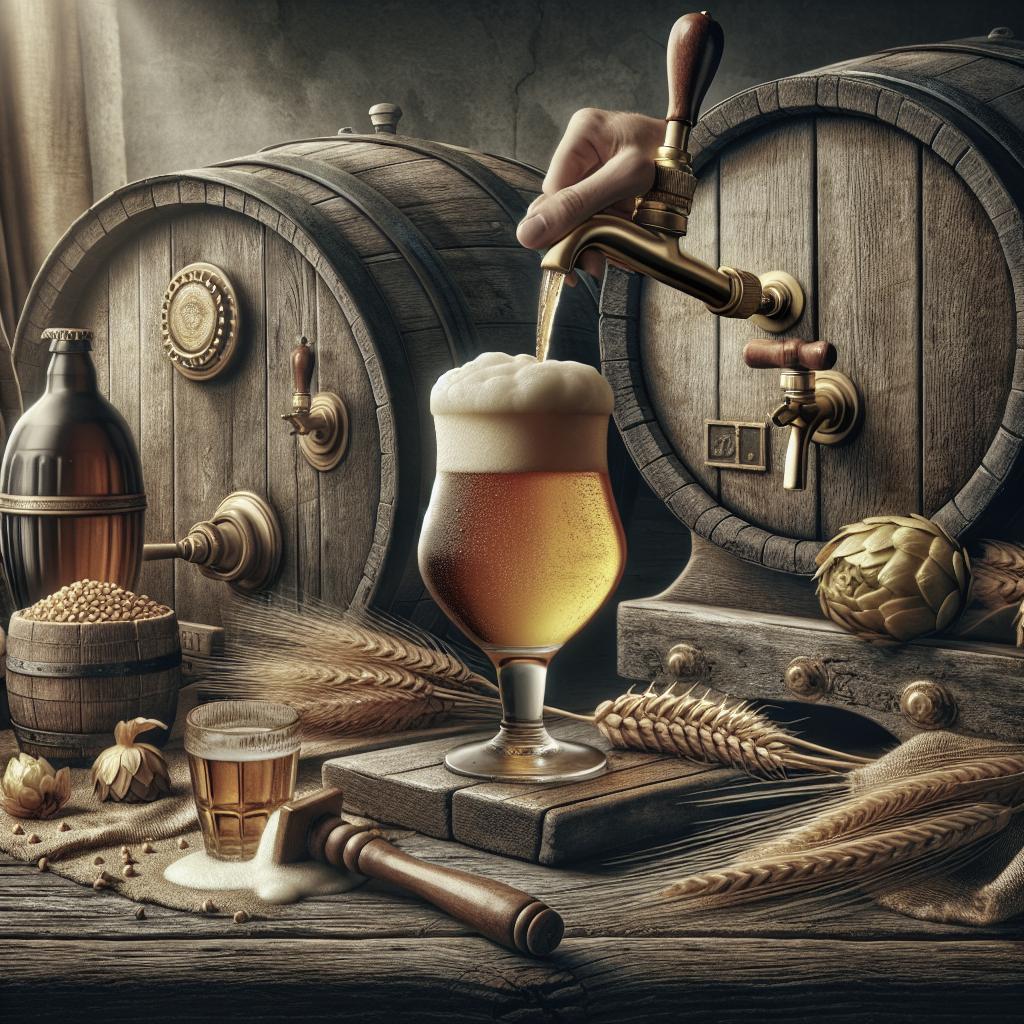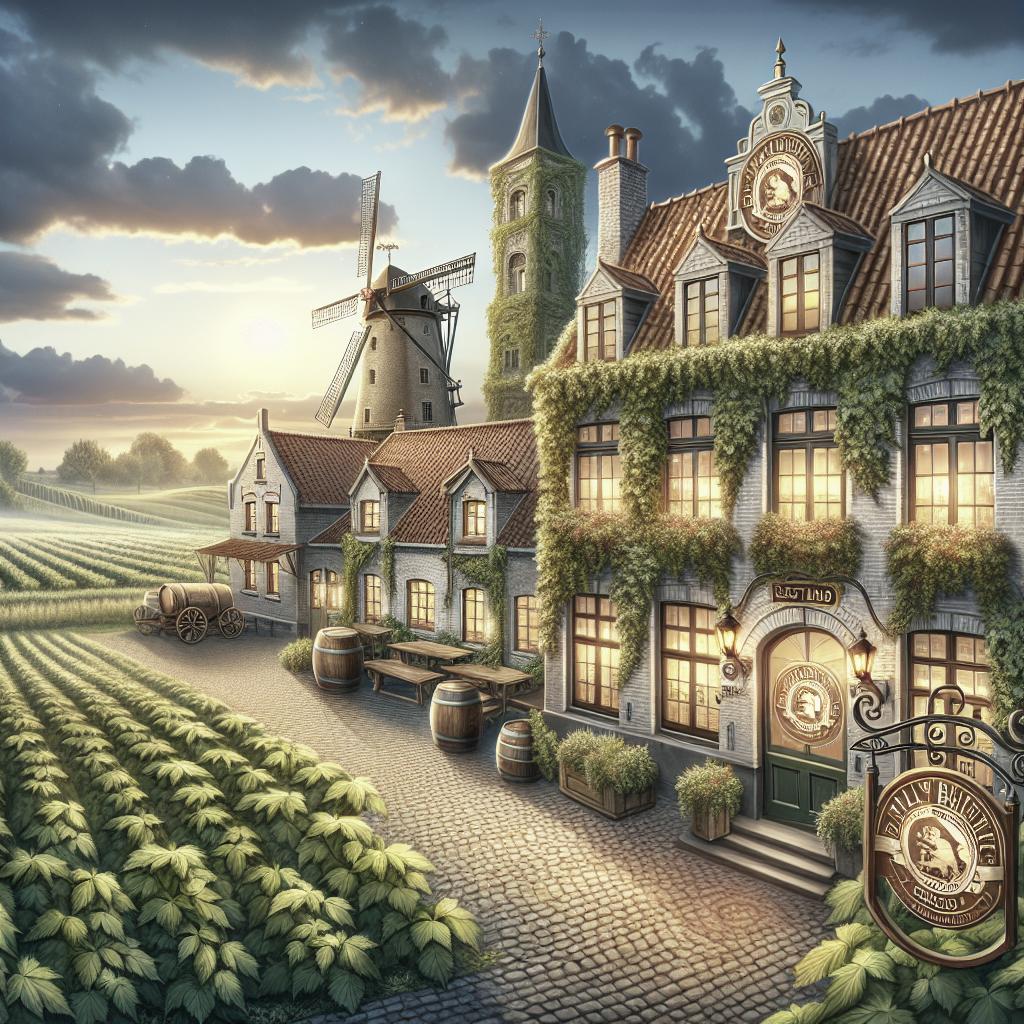“`html
Preserving Belgian Beer Traditions
Belgium is world-renowned for its rich beer culture, which boasts an iconic diversity of flavors, styles, and brewing techniques. Understanding the significance of this heritage is crucial to ensuring these traditions endure for future generations to enjoy. This article delves into the vibrant world of Belgian beer, focusing on the importance of beer festivals, optimal storage solutions, proper cellaring and aging techniques, and the overall preservation of these time-honored customs. Read on to discover how you can contribute to sustaining the unique legacy of Belgian beer, keeping its distinct qualities alive and appreciated globally.
Festivals de la bière en France 2024
French beer festivals hold a vital role in celebrating and preserving Belgian beer traditions, as they offer an enchanting showcase of the Belgian brewing prowess. These events foster cross-border connections and provide an ideal platform for Belgian brewers to introduce their masterpieces to a broader audience. The festivals highlight the diverse spectrum of flavors, aromas, and craftsmanship, ensuring the appreciation of such artistry is passed on to enthusiasts and future brewers alike.
The year 2024 is expected to be a vibrant year for beer festivals across France. With events spanning from regional artisan gatherings to large-scale international celebrations, these festivals will spotlight Belgian beers alongside local delicacies and international varieties. Attendees can dive deep into the intricacies of Belgian ales, stouts, lambics, and more, while engaging with experts who share insights into brewing techniques and history.
By supporting and participating in these festivals, individuals contribute significantly to the preservation of Belgian beer culture. Such contributions help ensure that traditional and innovative brewing techniques continue to be celebrated, revered, and enjoyed by future generations across the globe.
Types of beer storage
Storing beer correctly is paramount to maintaining its quality, flavor, and aroma. When considering beer storage, it is essential to understand the different types available – each tailored to accommodate specific styles and preferences. The most common types of beer storage include refrigeration, cellaring, and room temperature storage. Each of these methods can affect beer differently, emphasizing the importance of selecting the appropriate storage for varying beer types.
Refrigeration is widely employed for lager and light ales, ensuring they remain crisp and refreshing. This method inhibits the development of unwanted flavors resulting from oxidation or heat exposure. On the other hand, certain ales and stouts may benefit from controlled room temperature storage, allowing them to develop rich, complex flavors and aromas that reveal the beer’s true character over time.
Beer cellaring lies at the heart of preserving Belgian beer traditions, as it offers an opportunity to age select beers and transform their taste profiles. Understanding the nuances of these storage types is vital for beer enthusiasts devoted to maintaining the integrity of Belgian brews.
Ideal storage conditions
To preserve the quality and authenticity of Belgian beers, it is crucial to create ideal storage conditions. Factors such as temperature, humidity, light exposure, and storage position can significantly impact the taste and aroma of beers. Generally, the recommended storage temperature for most Belgian beers ranges between 45-55°F (7-13°C), ensuring stability in flavor and preventing any unwanted chemical reactions.
Humidity control is another vital consideration. Maintaining a humidity level of around 70% helps prevent oxidation and keeps corked bottles from drying out. Light exposure can degrade beer quality by initiating reactions that produce off-flavors, known as skunky aromas. Therefore, storing beer in a dark, cool place is always advisable.
The position in which beer bottles are stored can also affect the quality. Beers with cork closures should be kept horizontally to prevent cork drying, while beers with standard bottle caps are best stored upright to minimize oxidation and any sediment disruption. Comprehensively addressing these conditions fosters optimal beer quality and ensures Belgian beer traditions are preserved.
Beer cellaring and ageing
Belgian beers often benefit from aging, as their intricate recipes and craftsmanship can produce complex flavors over time. Beer cellaring, a growing trend among enthusiasts, allows for the controlled aging of select beer styles, enhancing their taste profiles and unveiling hidden characteristics. Successful cellaring demands a delicate balance of factors, such as proper storage conditions, beer selection, and patience.
The art of cellaring involves selecting beers that can withstand or improve with age, such as specific types of Belgian ales, lambics, and strong ales. These beer styles typically have higher alcohol content and resiliency against time. By experimenting with cellaring different beers and monitoring their evolution, enthusiasts can gain a deeper appreciation for the intricate flavors and rareness that define Belgian beer traditions.
Embracing beer cellaring not only augments a personal collection but also fosters an appreciation for the craftsmanship and history of Belgian brews. Sharing cellar-aged treasures can enrich social gatherings, allowing for memorable experiences and the broader dissemination of Belgian beer culture.
Related
For further appreciation of Belgian beer traditions, exploring additional aspects such as the use of authentic ingredients, traditional brewing methods, and historical significance can provide a more comprehensive understanding. Engaging in brewery tours and workshops also offers enthusiasts a hands-on experience, nurturing a deeper connection with Belgian beer culture.
Furthermore, participating in online beer communities and forums is an excellent way to connect with fellow enthusiasts and share insights. These platforms provide invaluable resources for expanding knowledge, discovering new beer styles, and exchanging tips on storage and cellaring techniques to support the preservation efforts.
Ultimately, celebrating Belgian beer traditions requires a collective endeavor, involving active participation and a curiosity to learn more about this heritage. By doing so, enthusiasts can contribute to its longevity, ensuring Belgian beers continue to be cherished and savored worldwide.
Summary of Main Points
| Section | Main Points |
|---|---|
| Festivals de la bière en France 2024 | French beer festivals play a crucial role in celebrating and preserving Belgian beer traditions, providing platforms to showcase unique flavors and connect enthusiasts. |
| Types of beer storage | Understanding and selecting appropriate beer storage methods like refrigeration, cellaring, and room temperature is vital to preserve beer quality. |
| Ideal storage conditions | Proper temperature, humidity, light exposure, and bottle positions are essential to maintain Belgian beer quality and preserve their unique characteristics. |
| Beer cellaring and ageing | Beer cellaring allows Belgian beers, especially select styles, to age gracefully and develop complex flavors, contributing to the preservation of this tradition. |
| Related | Exploring brewing methods, ingredients, and participating in beer communities and events fosters a greater understanding and appreciation of Belgian beer traditions. |
“`


